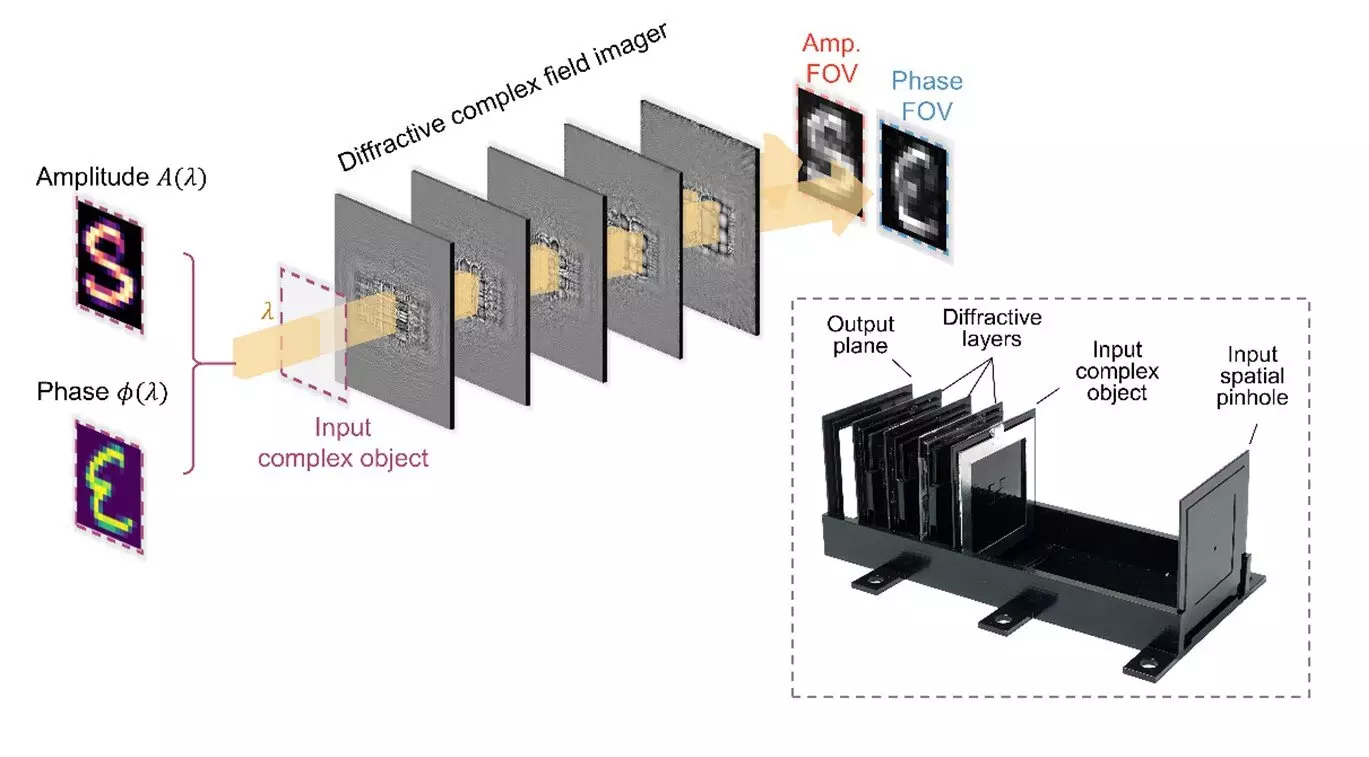The recent breakthrough at the University of California, Los Angeles (UCLA) in the field of optical imaging technology has marked a significant milestone. The development of a new all-optical complex field imager has sparked excitement and opened doors for innovation in various industries. Unlike traditional optical imaging technologies that rely on intensity-based sensors to capture only the amplitude of light, this new imager can capture both amplitude and phase information without the need for digital processing.
The complex field imager, designed by a team at UCLA led by Professor Aydogan Ozcan, utilizes deep learning-optimized diffractive surfaces to modulate incoming complex fields. By creating two independent imaging channels through these surfaces, the device can transform the amplitude and phase of input fields into intensity distributions on the sensor plane. This unique approach eliminates the need for complex digital reconstruction algorithms, simplifying the imaging process significantly.
The implications of this breakthrough in complex field imaging technology are vast. In the biomedical field, the imager can revolutionize real-time, non-invasive imaging of tissues and cells, providing crucial insights during medical procedures. Its compact design makes it suitable for integration into endoscopic devices and miniature microscopes, potentially advancing point-of-care diagnostics and intraoperative imaging.
In environmental monitoring, this technology can facilitate the development of portable lab-on-a-chip sensors for rapid detection of microorganisms and pollutants. Its portability and ease of use make it an ideal tool for on-site quantitative analysis, streamlining the process of environmental assessment. Additionally, in industrial applications, the imager can be used for rapid inspection of materials, offering detailed structural information without the need for bulky equipment or extensive computational resources, thus serving as a valuable asset in quality control and material analysis.
The development of the all-optical complex field imager represents a significant advancement in optical imaging. By enabling the direct capture of amplitude and phase information without the need for digital processing, this technology simplifies the imaging process and expands the possibilities for applications across various fields. As the research team continues to refine and expand upon their designs, the impact of this innovation is expected to grow, offering new opportunities for scientific research and practical applications in the future.


Leave a Reply